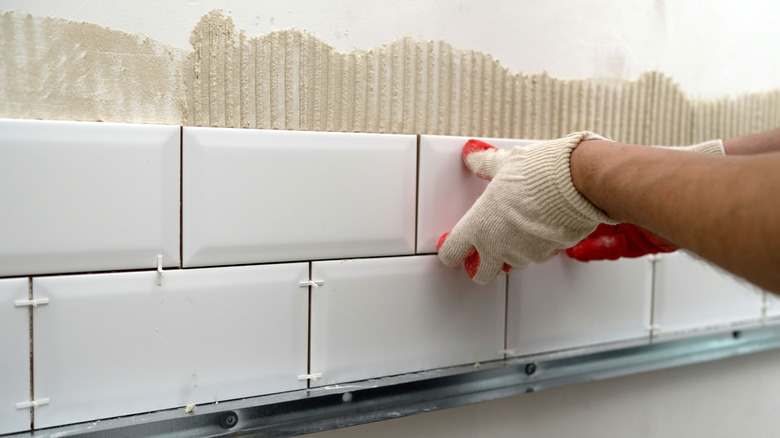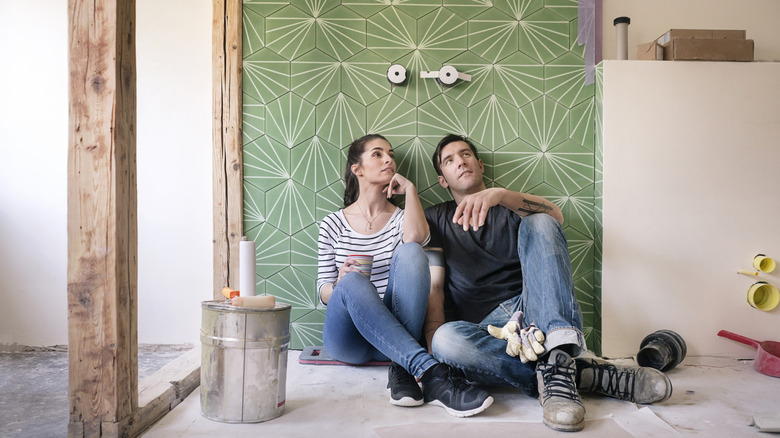Potential Drawbacks Of Using MusselBound Tile Adhesive
We may receive a commission on purchases made from links.
Changing a backsplash is a quick way to update the look of your cabinets, and fortunately, it's an incredibly DIY-friendly job that's made even easier with the availability of helpful materials like the MusselBound Adhesive Tile Mat. Instead of having to mix mortar and quickly apply tile to the wall, DIYers can use what is essentially a two-sided tape that sticks to the wall and the tile. What could be easier?
MusselBound has many advantages beyond eliminating the need for mortar. You can work at your own pace, only peeling enough of the backing to do whatever section of tile you're ready to work on at the moment, though you may need to think ahead to the next step if you want to take your time. You can grout immediately after placing the tile — as you do not need to wait for mortar to dry — or you can wait up to 24 hours, so keep this in mind as you apply your tile. You won't want to wait too long to move on to grouting.
Does this all sound too good to be true? Well, it's not. There are, however, some things you should know before diving into your tiling project using MusselBound. Not only it is more expensive than traditional mortar and possibly harder to work with, it also does not work on all surfaces.
Is MusselBound expensive and hard to work with?
Are there a few drawbacks to using MusselBound? Sure, but they aren't likely to deter determined DIYers. First, MusselBound is more expensive than traditional mortar. A 15-square-foot roll of MusselBound costs just under $50 while a 50-pound bag of thinset, which covers up to 150 square feet, costs less than $40.
Additionally, if you want to tackle a floor tile project, MusselBound is not an option — it's only for use on vertical surfaces. (Be sure to check out our tips for a perfect floor tile installation.) And if your walls are textured, you may have a harder time getting a strong bond unless you do some sanding and prep work.
Some DIYers think MusselBound can be harder to work with, as once you stick a tile to the mat, it's stuck; however, we've found that if you take a light touch with the initial application of the tile and are prepared to put some elbow grease into moving it, it's possible. Still, it's advisable to be sure you have your placement right before sticking the tile to the MusselBound mat, so use your spacers. On the other hand, if you're using a wet tile saw to cut your tiles, you will need to make sure they're absolutely dry before placing them, as wet tiles will not stick to the mat. If these drawbacks have not daunted you, it's time to move on to the fun stuff, like choosing the best color for your backsplash.

